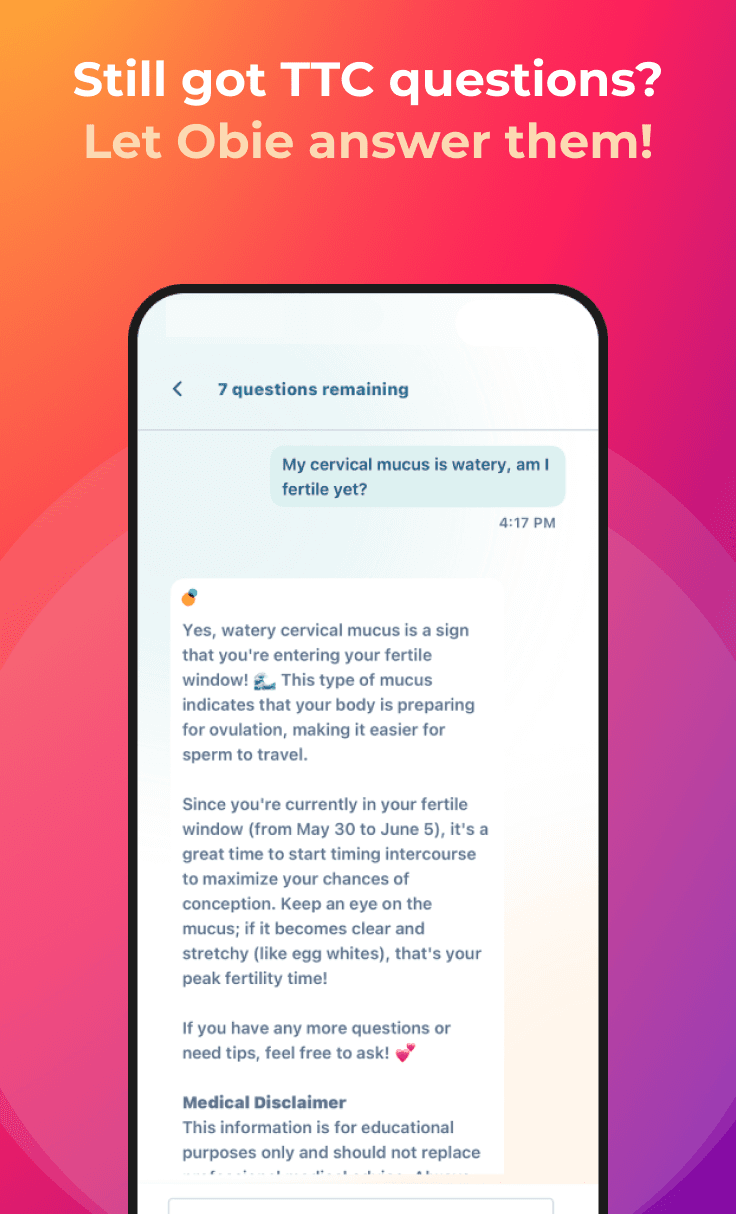Multiple Marker - Triple or Quadruple Screen
Prenatal Testing
Obie Editorial Team
The multiple marker test (sometimes referred to as the triple screen) can tell you if your baby is at an increased risk of having certain birth defects and genetic abnormalities. If you choose to have this test, it's important to understand that a "positive" or abnormal result doesn't necessarily mean that your baby has a problem. In fact, only about 10 percent of women with abnormal results have babies with birth defects. In general, an abnormal result means only that you may need further testing, such as ultrasound or amniocentesis, to know for sure.
On the other hand, a negative or normal result is not a guarantee that your baby is healthy — but it does mean that your baby's chances of having certain birth defects are much lower. And that's why a lot of women opt to take it. Current research indicates that this test will detect 75 to 85 percent of neural tube defects (such as spina bifida and anencephaly) and 60 percent of Down syndrome in babies of women younger than 35, and 75 percent of neural tube defects and Down syndrome in babies of women 35 and older.
How common is a positive result?
Only about 3 to 5 percent of women will receive a positive (abnormal) result on the multiple marker — and on average, only about 10 percent of those women will actually have a baby with a problem. That adds up to a lot of false positive results.
Statistics from one of the companies that offers a multiple marker test show an even higher rate of false positives: If 1,000 pregnant women take this test, only about 25 of them will show an increased risk for a baby with neural tube defects, and of those, only one or two will actually have a baby with a defect. About 70 of the 1,000 will show an increased risk for a baby with Down syndrome, and of those, only one or two will actually have a baby with Down syndrome. On the other hand, some women whose test results are normal will have a baby with one of these problems.
What does the test measure?
The multiple marker test measures your blood levels of three substances: alpha-fetoprotein (AFP), human chorionic gonadotropin (hCG), and unconjugated estriol (uE3). For years, women were screened for AFP alone in a test called the maternal serum AFP or MSAFP, but now most labs check for all three substances because they can tell more that way.
Some hospitals screen for the hormone inhibin A as well, in what's called a quadruple screen test. When this compound is added to the test, the detection rate for Down syndrome increases to between 67 and 76 percent in women younger than 35.
How and when is the test done?
It's usually done between 15 and 20 weeks of pregnancy, with 16 to 18 weeks (when the hormone levels are most consistent) being the optimum time. You'll have a blood sample taken and sent to a lab for analysis. The lab analyzes the levels of AFP, hCG, and uE3 (and sometimes inhibin A) in your blood and determines whether they fall within a "normal" range for this stage of your pregnancy, based on your age, weight, race, and other factors (such as having diabetes). Having too much or too little of these substances in your blood is considered a positive, or abnormal, result. Results are generally available in one to two weeks.
What exactly do the results mean?
Your levels of AFP and the other substances are considered individually and in combination to determine whether you and your baby are at risk for certain problems. The results tell you what your baby's chances are of having each kind of birth defect. For example, on average, a 35-year-old woman has a 1 in 250 to 270 chance of having a baby with Down syndrome. If the results show that your chances of having a baby with any of the defects tested for are higher than average for your age, you'll want to consider further testing.
A high AFP can mean several things. Your baby produces AFP throughout your pregnancy, and a certain amount of it should cross the placenta into your bloodstream at each stage. If there's more than expected, it often means that you're carrying more than one baby or that your baby is older than your practitioner thought. But in some cases, it's a sign of an abnormal opening in the baby's spine (spina bifida), head, or abdominal wall that's allowing more AFP to leak out. In rare cases, it can also signify a problem with the baby's kidneys. And in some cases, it doesn't mean any of those things.
A low AFP, low estriol, and high hCG are associated with a higher risk for Down syndrome (trisomy 21). Low levels of all three mean your baby has an increased risk for trisomy 18, a more severe and less common chromosomal anomaly.
Certain results may also indicate that you yourself are at a somewhat greater risk for problems such as preeclampsia, premature birth, or miscarriage. Knowing this can allow you and your practitioner to be on the lookout for signs of trouble.
What can I do if I get an abnormal result?
If you receive an abnormal result, you'll most likely be offered a detailed (level II) ultrasound first. This test can be done right away and can give you immediate information. (If the ultrasound shows that your baby is younger or older than your practitioner thought, your results will be recalculated.) You may also want to meet with a genetic counselor at this point to discuss your risks and your options.
If you have a high AFP, a level II ultrasound will confirm your baby's age and show whether you're carrying twins, and will allow your doctor to check your baby's spine and other parts for defects. If your baby is found to have spina bifida and you decide to continue the pregnancy, your medical team will be able to monitor your baby's condition during your pregnancy and prepare to do surgery once your baby's born.
If you have a low AFP, the ultrasound can allow your doctor to check for several so-called "soft markers" that may suggest Down syndrome and other chromosomal disorders. These soft markers include cysts in a particular area of the brain (choroid plexus cysts), extra calcium in certain muscles of the heart (hyperechogenic intracardiac foci), a kidney problem (mild pyelectasis), a thickened nuchal fold (also called the nuchal translucency, a clear area between the back of the baby's neck and the overlying skin), an abnormally short thigh bone, and a bright-appearing (hyperechogenic) bowel.
When two or more of these markers are found, the chance that your baby has a chromosomal abnormality may be significantly higher, depending on your age and how far along you are. Also, a baby with a major structural abnormality, such as a defect in the heart or abdominal wall, has a greater chance of having a chromosomal defect.
If everything looks normal on the ultrasound, it's not a guarantee that everything is okay, but it does mean that your baby has a lower risk of chromosomal defects than average for a woman your age. You may decide that this small risk is acceptable or you may decide that you'd also like to have amniocentesis to know for sure.
If the ultrasound suggests your baby may have a chromosomal problem, your practitioner will usually recommend amniocentesis to determine for sure what's going on. And if the ultrasound detects certain structural defects, you may want amniocentesis to find out whether your baby has a chromosomal problem as well, which is often the case. Amniocentesis can diagnose 99 percent of chromosomal abnormalities, but it does carry a slight risk of miscarriage (one in 200 on average). This test is usually done between 15 and 20 weeks so that the parents will have the option of terminating the pregnancy before 24 weeks if they choose to. Again, you have to wait ten to 14 days to get the results.
What are the pros and cons of having the multiple marker test?
- Pros: The main advantage of the multiple marker is that it can give you some information about your baby's risk of having certain birth defects without subjecting you to the slight risk of miscarriage associated with amniocentesis or the CVS test.
- Cons: If you're going to be 35 or older on your due date, your practitioner may suggest that you skip this test and go right to those more accurate tests. After you reach this age, your risk of having a baby with a chromosomal problem such as Down syndrome is higher than your risk of miscarrying because of amniocentesis.
Still, if you're uncomfortable with this risk, you may choose to have the multiple marker with a detailed ultrasound instead. If the results of these are both normal, you may not want to go through with the amnio because the small chance that the baby will have a defect may now be less than the chance that an amnio would cause a miscarriage, just as it would be if you were younger than 35.
Even if you know that you would never terminate a pregnancy for any reason, knowing in advance that your baby may have special needs allows you to prepare for the challenges you'll face. You might want to switch to a better-equipped hospital with specialists. Knowing what's going on with your baby will allow your medical team to monitor your pregnancy as needed and to bring a neonatologist or pediatric surgeon on board to prepare to help your baby after birth.
Cons: On the other hand, a false positive result can worry you needlessly (this is the most common complaint about the test) and may make you decide to undergo amniocentesis for no reason. A false negative result could make you decide to avoid further tests that would have revealed a birth defect.
From: March of Dimes








